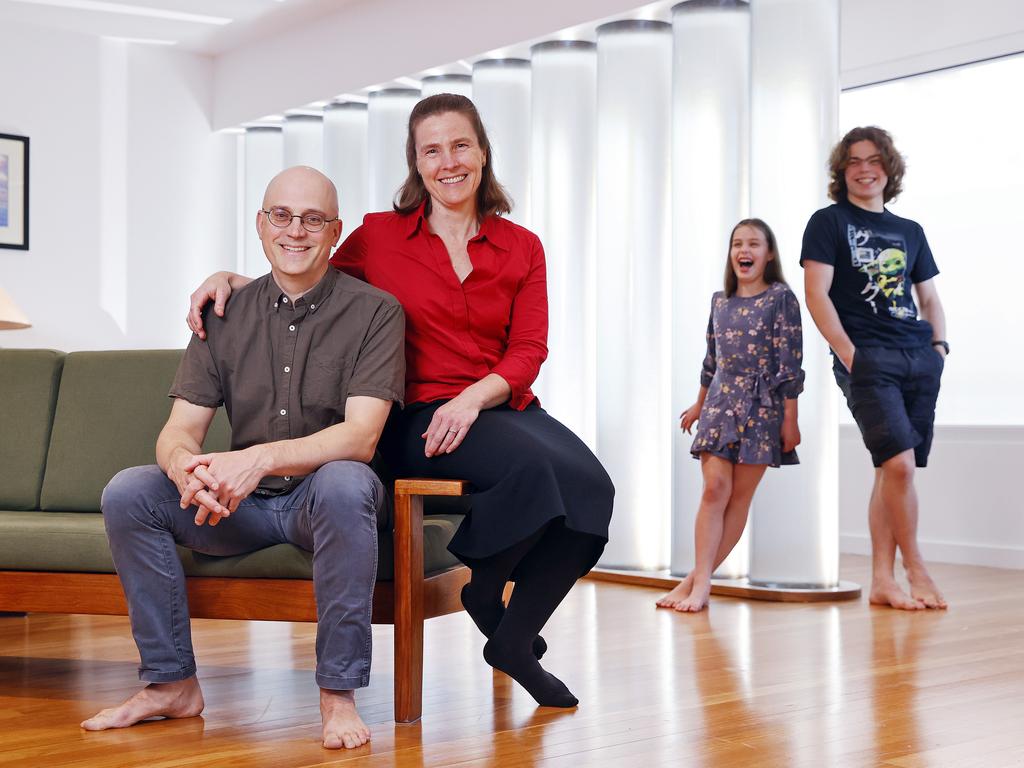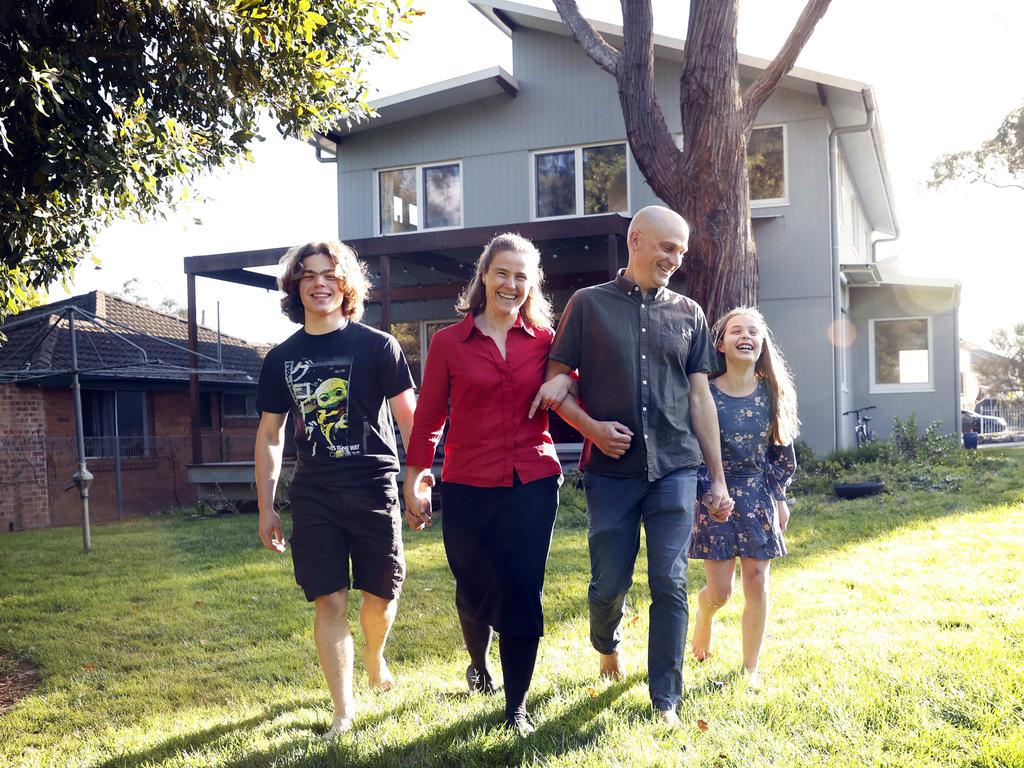How house design can slash your energy bills
New building codes will enable Aussies to save thousands on their power bills. See the incredible home features that have allowed this family to slash their costs.

With its elegant water-filled fibreglass tubes, “thermally broken” windows and heat recovery ventilation system, this could be every Aussie’s future home.
Called a “passive house,” it’s designed to keep occupants in maximum comfort at minimum cost, thanks to smart design.
For Matthew Kosnik and Katherine Wilson, who have lived in the house with their kids Silvia and Sean since 2019, the upfront costs were completely worth it.
“We used to live in a home that was cold in winter, hot in summer and suffered from the same mould issues that plague many houses. Now in our energy efficient home, we use way less energy, meaning lower bills, and have a comfortable temperature year round,” Dr Kosnik said.
More Aussie homes could look like this in the future, with a move to seven-star-rated energy efficient houses set to save the average owner of a newly built house hundreds of dollars every year.

Federal and state building ministers signed off on the higher minimum energy efficiency rating (up from six stars now) as part of a new National Construction Code adopted late last month.
Under the code, which comes into full effect in October 2023, newly built houses and apartments will have to reach the seven-star efficiency rating through a mix of features, which can include climate-smart layout, improved insulation, solar panels and home batteries.
According to Climate Council modelling on the impact of the new code, someone who moves into a new average-size seven-star dwelling will save $450 in heating and cooling costs in the first year – although the results vary widely between cities (and of course, the size of the home). In Brisbane the savings will be just $119, while in Darwin they will be as high as $945.
Climate Council project officer Dr Carl Tidemann said in some cases, adjusting a building’s orientation to maximise winter sun and reduce summer heat would automatically help the home reach a higher star rating, at little or no cost.
“Incorrect orientation, an east or west facing [of the home] can double the energy requirement, and a south facing home can … triple energy requirements,” he said.
Dr Tidemann said there could also be significant differences in energy costs in different parts of the same city. For example, the western suburbs of Sydney can get 10 degrees hotter than coastal areas, so increased efficiency is “even more important” there, and energy bill savings even higher.
The Housing Industry Association (HIA) raised concern about the new seven-star rating standard, with official figures showing average construction costs will increase by $2306.
But again, costs vary widely depending on location, with new builds in Brisbane estimated to cost an extra $912, while in Canberra that figures will be $3739.
Simon Croft, the HIA’s executive director for building policy, said the organisation had “raised a wide range of concerns related to both the technical details and the increase in construction costs” of the new National Construction Code.
“The code will be implemented differently by each state and territory. Therefore the additional costs on new homes will be different but it is clear that in several states the increase in costs will be in several thousand,” Mr Croft said.

Ms Kosnik said the cost of a house is more than just the mortgage.
“The true cost of the house is the cost of the building, but also all the bills that go along with living in it. It doesn’t cost that much upfront to save a lot in the longer term,” he said.
Those eye-catching water tubes in his home are primarily aesthetic, but they also play a role in stabilising ambient room temperature, he said.
The windows are designed so that they don’t act as conductors for outside heat or cold – thus, “thermally broken” – and the ventilation system allows for a steady flow of fresh air inside, but at a constant temperature.
Insulation in the roof, floor and walls minimises the need for heaters and airconditioning, while solar panels on the roof keep electricity costs low.
Originally published as How house design can slash your energy bills




